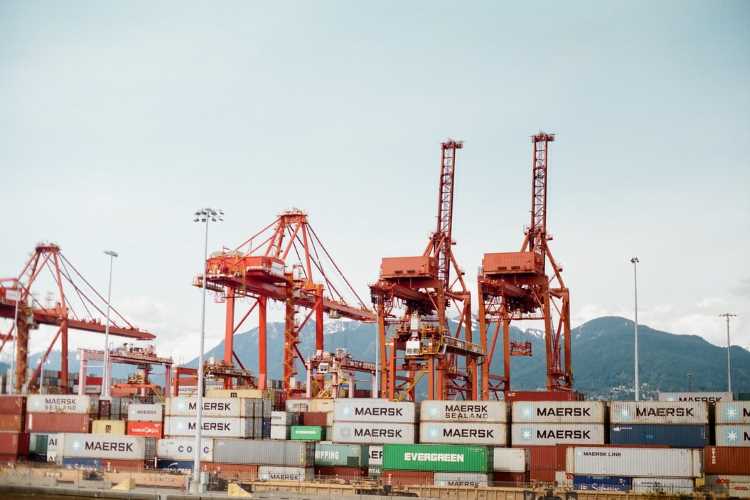
China to shun export-led growth strategy: As the world struggles to cope with the deadly Covid-19 pandemic, China seems to be unaffected by the most severe health crisis since the Spanish Flu outbreak in 1918. The world’s second largest economy has embarked on a new development paradigm to cement its position as a global economic power. The essence of the 14th Five-Year Plan (2021-25), announced by the Chinese government in July 2020, is enshrined in the novel concept of ‘dual circulation’.
The new development paradigm of China is centred around the dual circulation model in which domestic circulation and international circulation promote each other. China had adopted an ambitious export-driven model since 1979, making full use of the domestic and international markets and resources. The new model emphasizes on domestic circulation, leading key China watchers to wonder if the country is planning a transition from export-driven growth model to domestic consumption-driven economy.
China is one of the largest trading nations in the world. If it decides to shift from export-led economy to focus on domestic consumption, it will hamper world trade. Then why has China proposed to carry out domestic circulation as the focus? This could be because China’s exports were hit hard during the global financial crisis (2007-2012). China did turn to domestic consumption as the key driver of growth, but around 2013-14, it had again shifted its focus to exports. Now it is likely that the Covid-19 pandemic is having a huge negative impact on the global economy. A turnaround is possible only after the pandemic is tamed. This could be the reason behind the change in China’s development thinking.
READ I Sustainable development: ESG debates must enter classrooms, mass media
Covid-19 impacts exports
As the global economy shrinks under the weight of Covid-19 crisis, incomes and demand will fall, impacting international trade. In April 2020, the WTO had predicted world trade to shrink by 13-32%. One can now safely say that the fall will be closer to 32%. Since the outbreak of Covid-19 last year, many countries have effected partial to full lockdowns to protect their vulnerable populations.
Another reason is the US-China friction in the last three years. China’s exports were derailed by this trade war, which means a bulk of the country’s products needs to be absorbed domestically. This will take care of the unemployment problem. A more analytical perspective suggests that China experienced a peak of exports in 2006 and exports accounted for 35.4% of its GDP. This figure came down to 17.7% in April 2020. This means a little more than a third of China’s products were exported in 2006.
To put things differently, 82.3% of China’s domestic production was domestically absorbed and circulated before the new paradigm emerged. Basic laws of economics suggest that in case of a large economy like China, a higher percentage of products were absorbed by the domestic economy. In addition, a proportionally larger service sector in a country points to a higher percentage of its GDP (53.3%) in domestic circulation.
The advantage with China is that it has attained large economies of scale and, therefore, able to make its manufacturing sector more modern and productive. But if the economy is small and insufficient for domestic absorption, then it has to rely on exports to develop a modern manufacturing sector. A bigger economy means a bigger capacity for domestic absorption.
Some specific statistics in 2019 suggest interesting results such as Singapore’s exports accounted for 104.9% of its GDP while for Taiwan, the exports were 53.9%. As argued before, China’s exports were merely 35.4% during its peak in 2006, which was due to its economic size. The world’s second largest economy has much more capacity for domestic absorption than small economies. Therefore, China could adopt a new development paradigm.
READ I Labour reforms: How labour codes gave social dialogue, consultations a miss
Service economy and lower exports to GDP ratio
Secondly, statistics from the US and Japan reveal that around 2008-2009, US exports accounted for 11.1% of the country’s GDP. This means 89% of its output is absorbed domestically. For Japan, another advanced economy, the figure is 12.6% (2008, Statista). This means about 87.4% of its GDP was absorbed domestically. US and Japan registered about 11.7% and 18.5% of exports to GDP in 2019, respectively.
Why do these two countries, the world’s first and third largest economies, have lower percentage than China, the world’s second largest economy? It is mainly because they belong to high-income countries where the service sector accounts for a higher proportion of the GDP. About 80% and 70% of the GDP in the US and Japan come from the services sector. Whereas for China, the figure is 53.6%.
The services sector output is largely non-tradable in nature. Most of it is utilised in the domestic market and thus goes for domestic absorption. This means a higher percentage of the service sector in an economy means a lower share of exports in GDP. Currently China’s exports to GDP ratio is 17.65% (Statista), which may go down to 11% soon. This is making the Chinese government and policymakers confident to adopt the new development paradigm.
(The author is Professor, LBSIM, Delhi. Earlier, he was senior faculty member, IIFT.)

